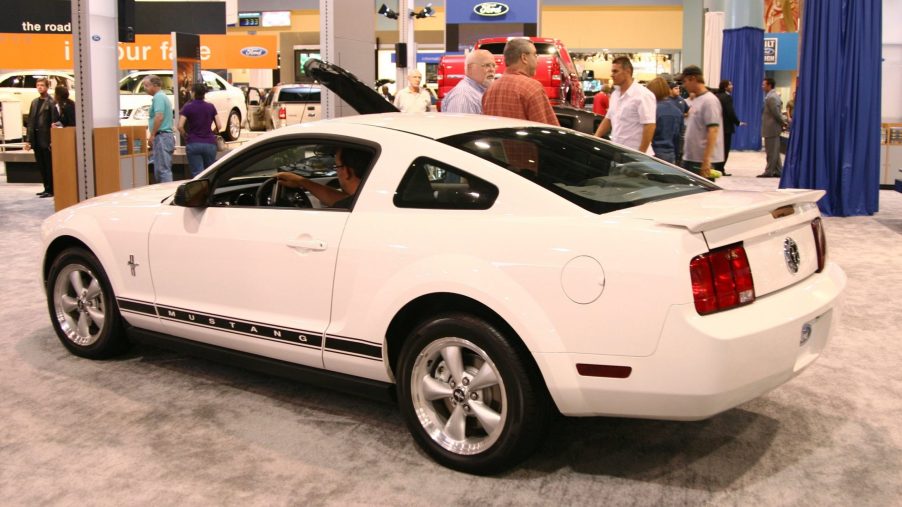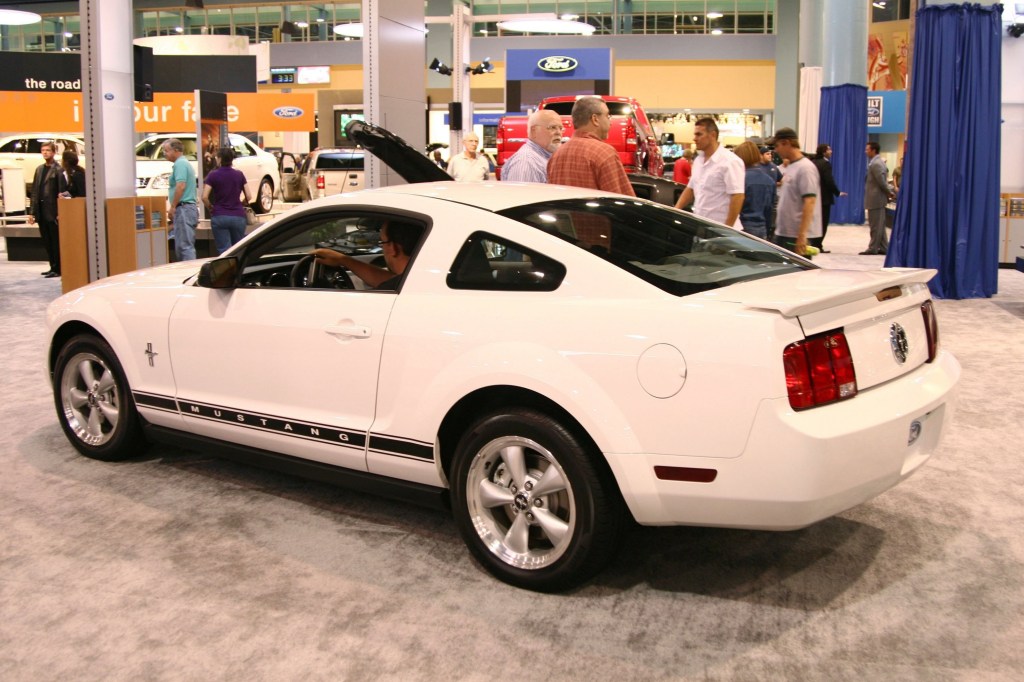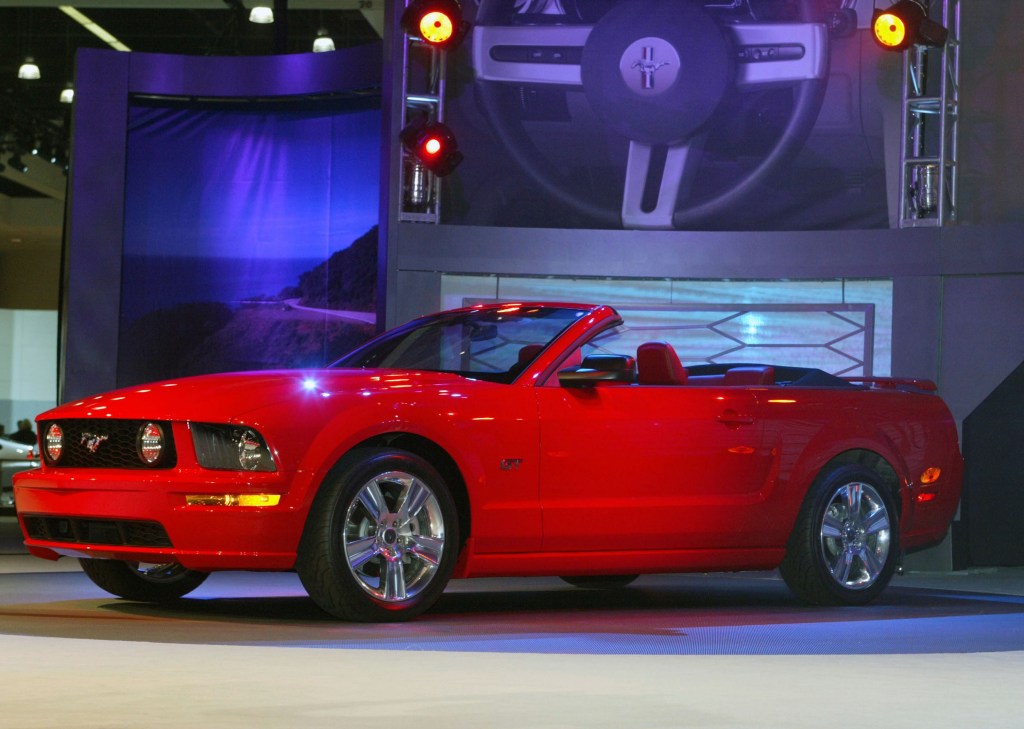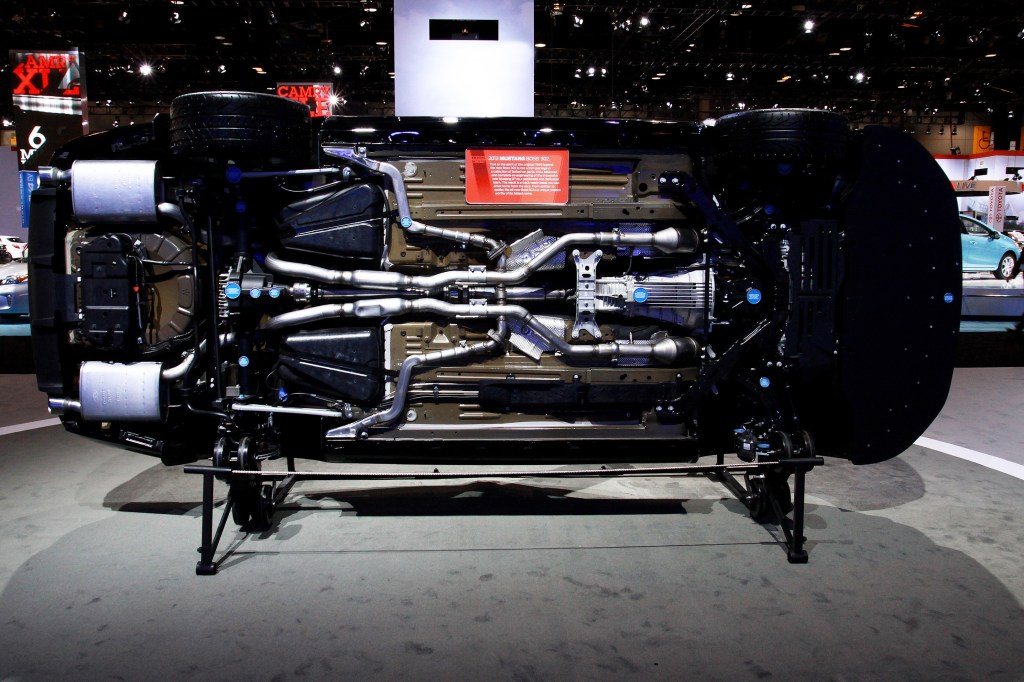
8 Most Common 2005-2014 S197 Ford Mustang Problems After 100,000 Miles
High-mileage 2005-2014 S197 Ford Mustang common problems guide:
- Pre-2011 S197 Ford Mustang Convertibles often have problems associated with chassis flex, while cars with 4.0-liter V6s face additional issues
- High-mileage engine sensor failure mostly strikes pre-2011 S197s Mustangs, but rear axle pinion seal leaks, battery drain issues, as well as paint and corrosion problems
- The Getrag MT82 manual transmission’s flaws are fixable, as is the vibrating manual transmission separator plate found in 4.6-liter GTs
Whether you’re into sports cars, muscle cars, or just want a cool convertible, there’s a Ford Mustang for you. And if you want the old-school feel of a solid rear axle, the last-gen S197 Mustang is the most modern option. However, secondhand S197s are still used cars, many of which have plenty of miles on their odometers, not all of them gentle. So, if you’re shopping for a 2005-2014 Ford Mustang, watch out for these kinds of problems.
Pre-2011 S197 Ford Mustang V6 models had a host of problems

As is the case today, Ford offered the S197 Mustang with a variety of engines. There wasn’t a turbocharged four-cylinder option, but there were several V6s and V8s. And unless you like solving problems, steer clear of the 2005-2010 Ford Mustangs with 4.0-liter ‘Cologne’ V6s.
Now, for some ‘Stang stans, the biggest flaw with the Cologne V6 is its modest 210-hp output. However, the engine has more serious issues, especially where its timing chain is concerned. The V6’s timing chain guides and tensioners are known to break, causing an infamous ‘death rattle.’ And because of how Ford designed the engine, replacing these parts isn’t easy.
But the 2005-2010 S197 Ford Mustang has other V6 problems. The engine thermostat’s plastic housing often fails, as do the EGR and PCV tubes. Admittedly, these aren’t unusual on high-mileage cars, but they occur significantly more often on S197s with Cologne V6s. So does harmonic balancer failure. Furthermore, some Cologne-equipped cars suffered bent valves due to valve spring issues. And they have odd two-piece spark plugs that often snap during replacement without special tools. Though to be fair, the 4.6-liter V8s have similar plug issues.
On the plus side, metal replacement housings for the thermostat are available. Also, Ford addressed the valve spring problems with a technical service bulletin. It did the same with the S197 Mustang’s chain guides and tensioners. But if you’re worried about high-mileage longevity, maybe give 2005-2010 V6 Mustangs a pass.
Avoid the worst S197 Ford Mustang Convertible chassis flex problems with a 2010-or-later car

Unlike today’s Shelby GT500, the S197 Mustang version was available as a convertible. But even if you don’t want the previous-gen GT500’s supercharged V8 power, a 2005-2014 Mustang Convertible is certainly not the worst used drop-top out there. However, the early S197 Ford Mustang Convertible’s problems show why the 2022 GT500 is coupe-only.
Chopping the roof off any car, whether it’s a luxury or muscle car, makes the entire vehicle less rigid. That’s not just bad for handling, but also for comfort and in a roundabout way, build quality. See, if a car isn’t rigid enough, parts of it start shaking and twisting because they can’t contain road and engine forces. In the 2005-2009 S197 Mustang Convertible’s case, the chassis can flex so much that the windshield starts shaking. And that’s in addition to the noticeable cowl shake.
On the plus side, Ford addressed these chassis problems with the 2010 Mustang refresh. These later S197s inherited stiffer springs and recalibrated shocks from the 2008 Bullitt and received some extra chassis reinforcements. And in 2011, a front strut-tower brace became standard on the GT Convertible, further reducing flex.
Admittedly, you can address these shaking problems in pre-2010 S197 Ford Mustang Convertibles with aftermarket reinforcements. A variety of shops offer S197-specific chassis bracing, including strut-tower braces for earlier cars. But if modification isn’t your thing, shop for a 2010-or-later car.
High-mileage 2005-2014 Mustangs often have paint and rust issues
The 2010 Ford Mustang addressed several of the earlier S197’s flaws, including interior quality. However, it didn’t solve all the issues. And whether you have an early S197 or a later one, as the miles pile on, the paint starts to blister and fail. It’s the #2 worst S197 Ford Mustang issue on CarComplaints—and it sits between a related problem.
Paint doesn’t just make your car look good. It also physically and chemically protects the metal body from damage, whether that’s flying rocks, UV light, or rust. And if it fails, corrosion can swoop in. That’s exactly what happens to S197s with blistering paint, especially around the hood area, where the paint can trap water, PistonHeads explains. Hence why the #1 and #3 S197 Ford Mustang problems on CarComplaints are rusted hoods.
This type of water ingress is another reason to be wary of S197 Mustang Convertibles. Although the 2010-and-later ones are stiffer, like any high-mileage convertible, their weather seals dry up and their rain gutters often clog. When that happens, water gets where it shouldn’t and leads to mold, mildew, and potentially electrical issues.
S197 Ford Mustang battery drain problems might have multiple sources
Speaking of electrical issues, a common S197 Ford Mustang problem, especially in earlier models, is rapid battery drain. Luckily, though, even if your Mustang isn’t leaking, your battery issues might be fairly easy to resolve. And no, I don’t just mean that you aren’t driving your pony car enough.
High-mileage S197 Mustangs often experience alternator diode failure, PH says. The alternator spins just fine, but it’s not actually sending any electricity to the battery, lights, or accessories. However, according to multiple owner forums’ claims, it’s only pre-2010 alternators that regularly fail due to non-age-related issues. So, if you have a 2005-2009 S197 Ford Mustang with battery drain problems, check if the alternator is bad. And if it is, swap in the 2010-and-later version.
Also, remember that earlier bit about water ingress? Well, even non-Convertible S197 Mustangs often develop door and body seal issues as they age. This lets water come in and fry various electrical components, especially the passenger-side-mounted Smart Junction Box, PH explains. And if it gets soaked, you’ll often experience battery drain.
In addition, various owner forum members claim that the optional Shaker 500 and 1000 audio systems can drain Mustang batteries. The claims specifically point to the amps as the source of the parasitic draw. As of this writing, there’s no official diagnosis from Ford on the matter. However, if replacing the alternator and SJB doesn’t fix your S197’s draining battery, it’s something worth considering.
The S197 Ford Mustang can develop sensor problems at or after 100,000 miles
In addition to the paint and rust problems, S197 Ford Mustangs often experience various sensor failures as they age. That’s not unusual to see in any high-mileage used car, but it happens more frequently in S197s.
An illuminated Check Engine Light and a rough-running engine often point to a dirty mass airflow (MAF) sensor and/or a clogged throttle body. Fortunately, you can clean both relatively easily, though be careful with the throttle body, as it’s electronic, not cable-operated. If that doesn’t work, it could be the engine control sensor, which often goes bad.
In addition, S197 Ford Mustangs can develop manifold absolute pressure (MAP) and differential pressure EGR (DPFE) sensor problems. These issues can affect both the Cologne V6 and the 4.6-liter V8 in the Bullitt and pre-2011 GT. The later 5.0-liter Coyote V8 and 3.7-liter Duratec V6, though, are seemingly unaffected.
Watch out for MT82 transmission problems on 2011-and-later S197 Ford Mustangs

Although the later S197 Ford Mustang models tend to have fewer problems overall, they’re not entirely trouble-free. And one feature, in particular, has drawn not just ire, but class-action lawsuits: the Getrag MT82 six-speed manual transmission.
Starting in 2011, Ford replaced the S197 Mustang’s Tremec five-speed manual with the six-speed Getrag box. On paper, this was an upgrade, especially in the fuel-economy department. However, it quickly became a nightmare as owners experienced gear clash, poor engagement, worn synchronizers, and total failure. Furthermore, unlike the Tremec stick, Getrag’s unit couldn’t handle hard, high-rpm shifting. It would even lock some owners out of third gear if they shifted too high in the rev range, CJ Pony Parts says.
Ford has since acknowledged some of the transmission’s shortcomings. Not only has it posted multiple TSBs on the matter, but it also revised the transmission for the 2018 Mustang. In addition, aftermarket parts like short-throw shifters, stronger clutches, and shifter support brackets can improve durability and shifting quality. It’s also worth replacing the clutch fluid line, especially if you have a 2011-2014 GT.
Regardless, if you’re looking to buy a stick-shift 2011-2014 S197 Mustang, be prepared to address the transmission at some point.
All S197s have rear axle leak issues, though
While later S197 Ford Mustangs can have transmission problems, all 2005-2014 Mustangs can develop rear axle leaks as they age. The issue here is the axle pinion seal, which is supposed to keep differential fluid inside as well as water and debris outside. These seals are technically wear items, but they fail often enough on high-mileage S197s to mention here.
The good news is that S197 Mustang rear axle pinion seals are relatively cheap; like $20-$30. But installing them is a labor-intensive process, so the total repair can get pricey, PH notes. You can theoretically replace it yourself, but unless you have the proper, i.e., dedicated tools, it’s best to go to a mechanic.
You might experience excessive separator plate vibration, but it’s fixable
Earlier, I noted that S197 Ford Mustangs with 4.6-liter V8s can have sensor problems and fragile two-piece spark plugs. But those aren’t the only issues they might face. Although these pre-2011 GTs’ Tremec manual transmissions are stouter, their separator plates aren’t.
Sandwiched in the transmission bell housing between the engine block and the flywheel, the separator plate is basically a metal shield. It protects the engine block from clutch and flywheel debris should something go spectacularly wrong. Also, it helps align the starter motor with the flywheel for smooth starts.
However, the original separator plate in the manual 4.6-liter S197 Mustang had an annoying third function. When owners cold-started their cars, the plates would contact the flywheel and start buzzing like crazy below 3000 rpm. The noise went away after the engine warmed up, but the next morning, the vibrations would start again.
Luckily, there’s a Ford TSB, # 09-18-16, that addresses this issue. The cure involves replacing the original separator plate with a new, redesigned one. By now, most affected S197s should have the redesigned version. But if yours doesn’t, take it to the dealer. And if you track your S197 Mustang, upgraded separator plates are available for manual and automatic transmissions. Plus, they only cost about $50-$100.
Follow more updates from MotorBiscuit on our Facebook page.


